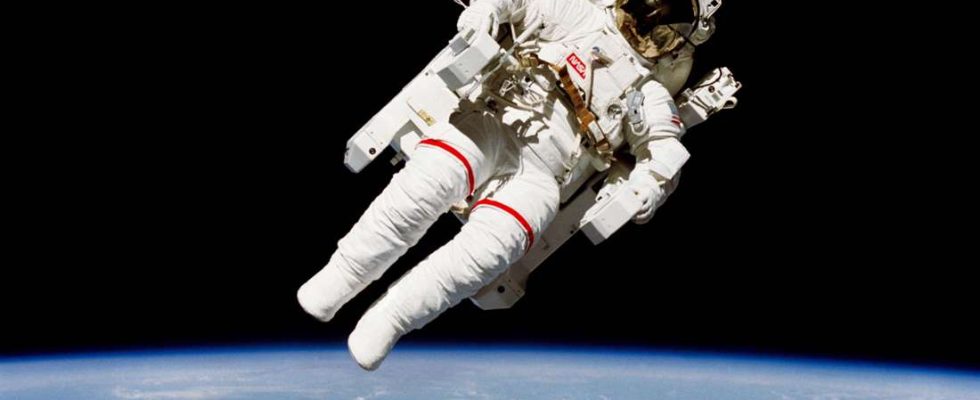Press
For astronauts, being in zero gravity looks effortless, but it often isn’t. A new study shows what space travelers suffer from.
Suffering – If you watch an astronaut moving in the weightlessness of space, everything seems very simple. But that’s not it. Floating freely, doing somersaults and standing upside down – weightlessness means a lot of physical exertion for the human body. For example, many astronauts complain about so-called space sickness in the first days of a space trip – their bodies first have to adapt to the new conditions.
In the future, astronauts should stay in space longer and, for example, on the moon or that Mars research. This is extremely inconvenient, as a new study shows: astronauts who had no problems with headaches on Earth can get migraines and tension headaches on longer space missions. “The changes in gravity caused by spaceflight affect the function of many parts of the body, including the brain“explains neurologist WPJ van Oosterhout from the Leiden University Medical Center in the Netherlands.
Headaches in weightlessness: study shows extent
Van Oosterhout is leading a study on headaches in weightlessness in the specialist journal Neurology published became. In one notice He explains why the body has problems in weightlessness: “The vestibular system, which influences balance and posture, has to adapt to the conflict between the signals it expects and the actual signals it receives in the absence of normal gravity receives, adjust.” This could lead to motion sickness in the first week in weightlessness, with headaches being the most common symptoms.
A total of 24 astronauts from the European Space Agency (ESA) and their American and Japanese counterparts were included in the study NASA and Jaxa included. The test subjects stayed on board the International Space Station (ISS) for up to 26 weeks between November 2011 and June 2018. Before the trip into weightlessness, each participant filled out a headache questionnaire. During the first seven days in space, symptoms were queried daily, then only weekly thereafter.
Many astronauts complain of headaches in weightlessness
Nine of the astronauts said they had never had a headache before their stay on board the space station, and three had had a headache at least once in the past year that affected daily activities. None of the participants were aware of migraines. Over the course of the 3,596 days that the 24 astronauts spent in space, 22 of them reported a total of 378 cases of headaches. According to van Oosterhout’s research team, 92 percent of astronauts reported headaches in weightlessness – on Earth it was only 38 percent.
The majority of reported headaches were tension headaches, only ten percent were identified as migraines. However, according to the research team, the headaches were of higher intensity and more likely to be migraine-like in the first week of weightlessness. Even after the first week in space, in which 21 astronauts reported headaches 51 times, the astronauts still suffered from headaches. In the three months after the astronauts returned to Earth, not a single participant reported a headache.
Headaches can also occur later in the space mission
“Our study shows that headaches also occur later in space and could be related to increased pressure in the skull,” says van Oosterhout. He is certain: “Further research is needed to decipher the causes of headaches in space and to investigate how these findings can lead to insights into headaches on Earth.” The neurologist also believes that effective therapies need to be developed to combat headaches in space. “For many astronauts, this represents a major problem during space flight.” (tab)

